
The Untouched Beauty of Rocha Coast
Discover Rocha Coast in Uruguay: Unspoiled beaches, charming villages, and rich wildlife make this an ideal destination for nature lovers and tranquility seekers.
The Rocha Coast in Uruguay is a hidden gem waiting to be discovered by those seeking pristine beaches, charming fishing villages, and unspoiled natural beauty. Stretching along the southeastern coast of Uruguay, this region offers a tranquil escape from the hustle and bustle of city life. With its golden sands and crystal-clear waters, it is the perfect destination for beach lovers and nature enthusiasts alike. One of the highlights of the Rocha Coast is Cabo Polonio, a remote village that can only be accessed by 4x4 vehicles or on foot. Here, you can explore the towering sand dunes, visit the iconic lighthouse, and observe the resident sea lion colony. The village itself is a step back in time, with no electricity or running water, offering a unique opportunity to disconnect and immerse yourself in nature. For those interested in wildlife, the Rocha Coast is home to several protected areas, including the Santa Teresa National Park and the Laguna de Rocha. These areas are teeming with diverse flora and fauna, making them ideal for birdwatching and nature walks. The park also features historical fortifications and scenic trails, providing a blend of natural and cultural experiences. The local cuisine is another highlight, with fresh seafood being a staple. Visitors can enjoy a meal at one of the many seaside restaurants, where dishes are often prepared with locally sourced ingredients. Whether you're savoring grilled fish or indulging in a traditional Uruguayan barbecue, the flavors of Rocha are sure to delight your taste buds.
Local tips in Rocha Coast
- Bring cash as some remote areas may not have ATMs or accept credit cards.
- Pack a flashlight if visiting Cabo Polonio, as there is no electricity at night.
- Visit during the off-season to avoid crowds and enjoy a more serene experience.
- Wear comfortable shoes for exploring natural parks and walking on sand dunes.
- Try the local seafood dishes, especially in the fishing villages along the coast.
The Untouched Beauty of Rocha Coast
The Rocha Coast in Uruguay is a hidden gem waiting to be discovered by those seeking pristine beaches, charming fishing villages, and unspoiled natural beauty. Stretching along the southeastern coast of Uruguay, this region offers a tranquil escape from the hustle and bustle of city life. With its golden sands and crystal-clear waters, it is the perfect destination for beach lovers and nature enthusiasts alike. One of the highlights of the Rocha Coast is Cabo Polonio, a remote village that can only be accessed by 4x4 vehicles or on foot. Here, you can explore the towering sand dunes, visit the iconic lighthouse, and observe the resident sea lion colony. The village itself is a step back in time, with no electricity or running water, offering a unique opportunity to disconnect and immerse yourself in nature. For those interested in wildlife, the Rocha Coast is home to several protected areas, including the Santa Teresa National Park and the Laguna de Rocha. These areas are teeming with diverse flora and fauna, making them ideal for birdwatching and nature walks. The park also features historical fortifications and scenic trails, providing a blend of natural and cultural experiences. The local cuisine is another highlight, with fresh seafood being a staple. Visitors can enjoy a meal at one of the many seaside restaurants, where dishes are often prepared with locally sourced ingredients. Whether you're savoring grilled fish or indulging in a traditional Uruguayan barbecue, the flavors of Rocha are sure to delight your taste buds.
When is the best time to go to Rocha Coast?
Iconic landmarks you can’t miss
The Fingers of Punta del Este
Discover the stunning Fingers of Punta del Este, a monumental sculpture that symbolizes human vulnerability and offers breathtaking views along Uruguay's beautiful coastline.

Santa Teresa National Park
Discover the breathtaking beauty and rich biodiversity of Santa Teresa National Park, a prime destination for nature lovers and adventure seekers in Uruguay.
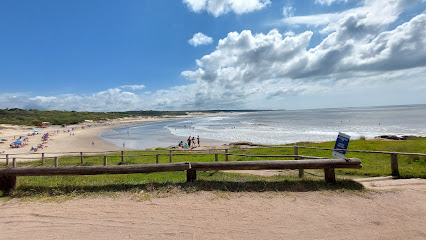
Colonia del Sacramento Lighthouse
Discover the historic charm and breathtaking views at Colonia del Sacramento Lighthouse, a must-see destination in Uruguay's enchanting coastal town.
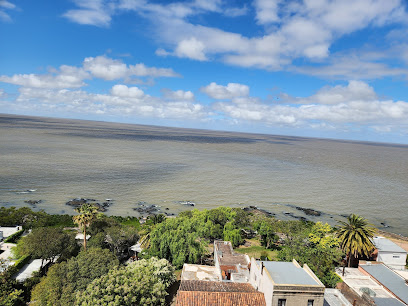
Fortress of Santa Teresa
Explore the Fortress of Santa Teresa in Uruguay: A stunning historical landmark surrounded by breathtaking landscapes and rich military heritage.
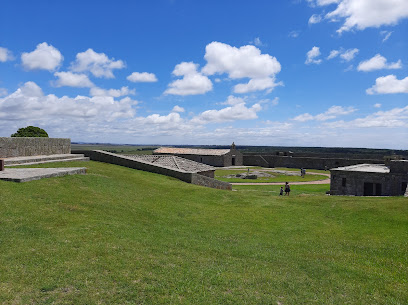
Francisco Piria Castle
Experience the majestic Francisco Piria Castle in Piriápolis, a historical landmark that blends stunning architecture with captivating stories.
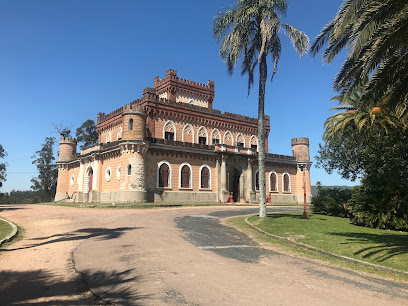
El Faro del Cabo Santa Maria
Explore El Faro del Cabo Santa Maria, a historic lighthouse in La Paloma, Uruguay, offering stunning ocean views and rich maritime history.

Puerto de Punta del Este
Discover the charm and vibrancy of Puerto de Punta del Este, a must-visit seaport in Uruguay offering stunning views, delicious cuisine, and lively culture.
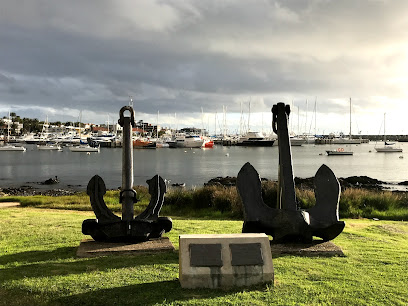
Palacio Salvo
Explore the architectural beauty and historical significance of Palacio Salvo, a Montevideo landmark that showcases the city's rich cultural heritage.

Punta Ballena Lookout Point
Explore breathtaking panoramic views of the Atlantic Ocean at Punta Ballena Lookout Point, a stunning observation deck in Uruguay's Maldonado region.
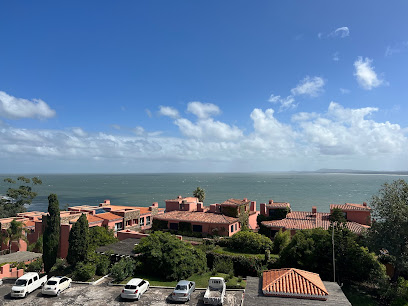
Museo Ralli Punta del Este
Explore Museo Ralli Punta del Este, a premier modern art museum showcasing Latin American artists in a stunning architectural setting.
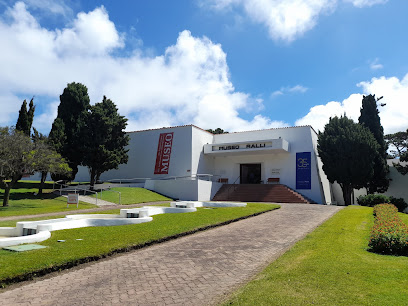
Fuerte San Miguel
Discover the historical marvel of Fuerte San Miguel, a fortress and museum that showcases Uruguay's rich military heritage and stunning coastal vistas.
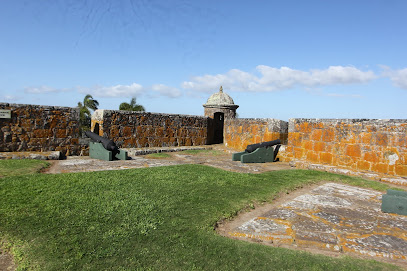
Plaza Independencia
Explore the vibrant Plaza Independencia in Rocha, Uruguay - a lively park filled with history, culture, and natural beauty for all tourists.
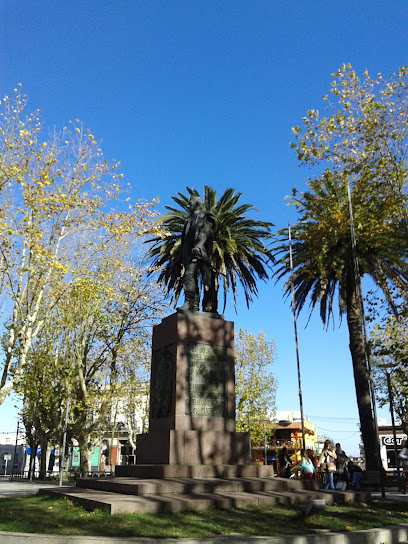
Mirador La Mano
Experience breathtaking panoramic views and artistic beauty at Mirador La Mano in Uruguay's stunning Rocha Department, a must-visit for every traveler.
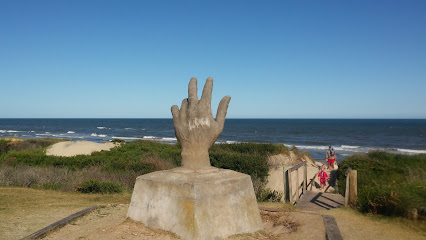
Farol de Cabo Polonio
Explore the stunning Farol de Cabo Polonio, a historic lighthouse offering breathtaking views of the Atlantic and untouched coastal beauty.
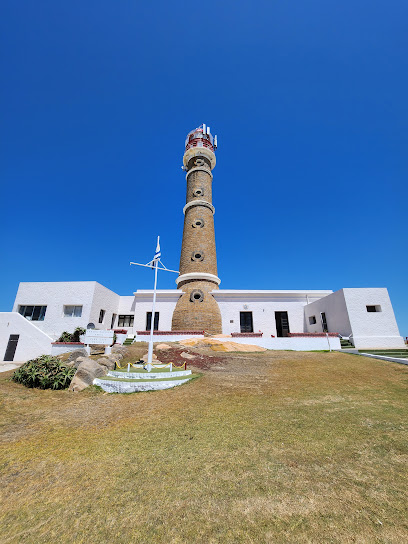
Artigas Mausoleum
Explore the Artigas Mausoleum in Montevideo, a majestic monument dedicated to Uruguay's founding father, José Artigas, in the vibrant Plaza Independencia.

Unmissable attractions to see
Plaza Independencia
Explore Plaza Independencia in Rocha, Uruguay, where history, nature, and local culture come together in a vibrant park setting.
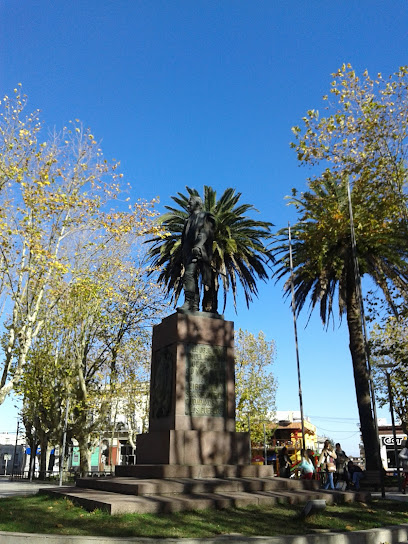
Playa del Rivero
Experience the tranquil beauty of Playa del Rivero, a hidden gem in Uruguay's Rocha Department, perfect for sunbathing and serene nature escapes.

Monumento A Artigas
Explore the rich maritime history of Uruguay at Monumento A Artigas, a captivating museum in Punta del Diablo showcasing the country's nautical legacy.
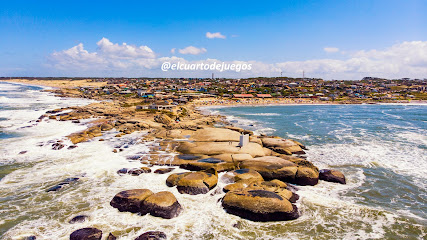
Regional Museum of Rocha
Explore the rich cultural heritage of Rocha at the Regional Museum, where history comes alive through fascinating exhibits and local artifacts.
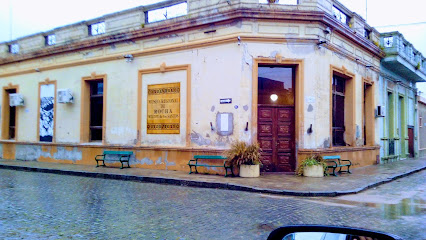
Palmares de Rocha
Explore the breathtaking landscapes and diverse wildlife of Palmares de Rocha, a serene tourist attraction in Uruguay's Rocha Department.
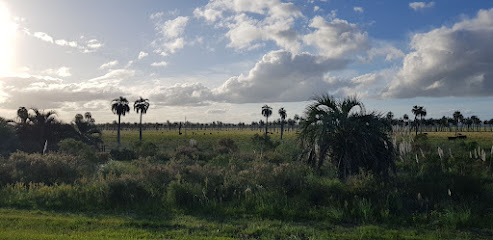
Essential places to dine
La Cocina de Pedro
Discover the authentic flavors of Uruguay at La Cocina de Pedro in Montevideo - where every dish tells a story.
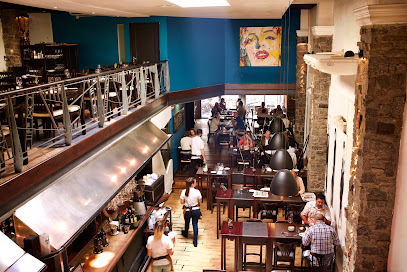
Parador La Huella
Discover Parador La Huella: A premier Uruguayan restaurant offering exquisite local cuisine with stunning ocean views in Faro de José Ignacio.
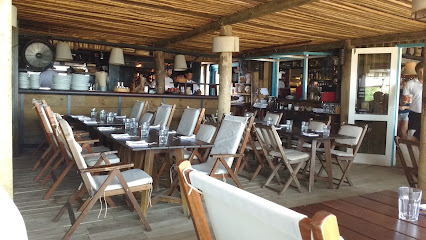
Restaurante Arrecife
Experience exquisite seafood dining at Restaurante Arrecife in La Paloma - where fresh flavors meet stunning coastal views.
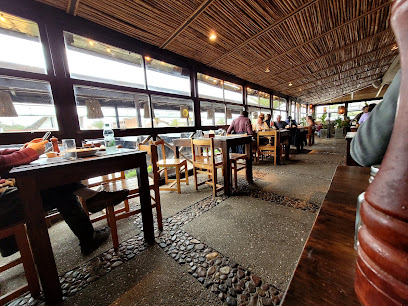
El Palenque
Discover El Palenque in Montevideo for an authentic taste of Uruguayan cuisine amidst a warm and inviting atmosphere.
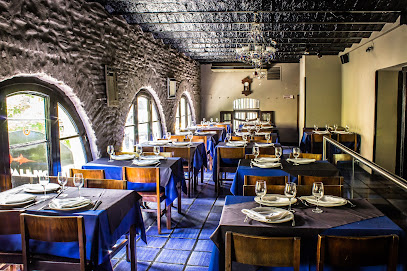
Jacinto
Discover Jacinto in Montevideo - where modern dining meets traditional flavors in an inviting atmosphere.
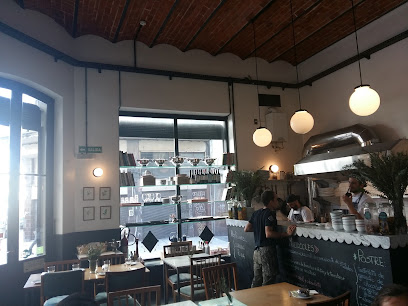
Restaurant Tandory
Experience the best of Asian fusion cuisine at Restaurant Tandory in Montevideo—where tradition meets innovation on your plate.

Americano
Experience authentic Uruguayan cuisine at Americano – where flavor meets hospitality in Rocha.
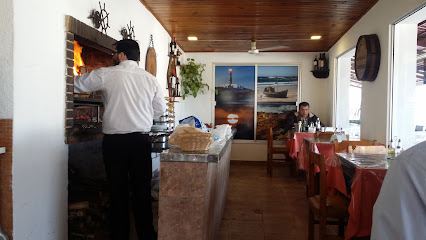
Parador Rocha
Discover exquisite Uruguayan flavors at Parador Rocha, where every meal is a celebration of local cuisine in a cozy setting.
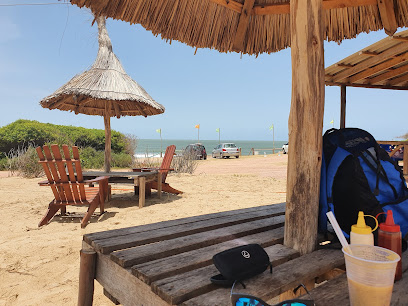
Orishas
Experience authentic Uruguayan flavors at Orishas in La Paloma - where local ingredients meet culinary creativity.
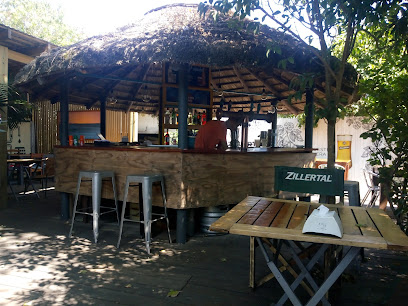
Apalco
Discover the flavors of Uruguay at Apalco—where local ingredients meet culinary creativity in a cozy setting.
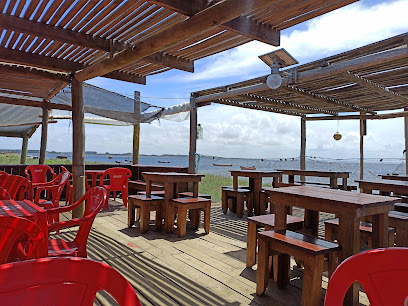
Parador María Esther
Savor delicious fast food at Parador María Esther in Rocha—where local flavors meet friendly service.
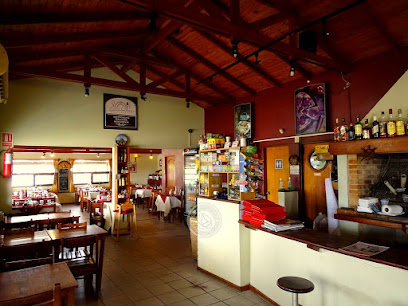
Juan Salvador Restaurant
Experience the essence of Punta del Diablo with exquisite seafood and local flavors at Juan Salvador Restaurant.
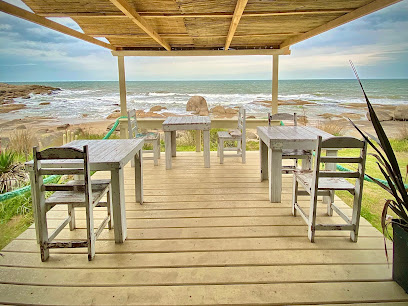
La Fonda
Discover La Fonda in Montevideo - where traditional Uruguayan cuisine meets organic freshness in a family-friendly setting.
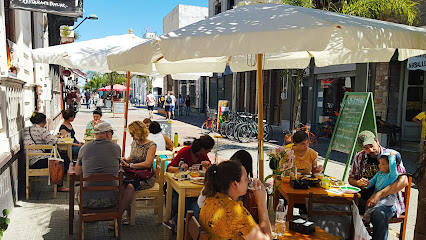
Lo de Tere
Discover the epitome of fine dining at Lo de Tere in Punta del Este - where exquisite cuisine meets breathtaking views.
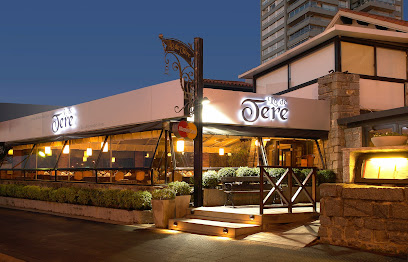
Restaurante Il Tano Cucina
Experience the best of Italian cuisine in Punta del Diablo at Il Tano Cucina - where tradition meets coastal charm.
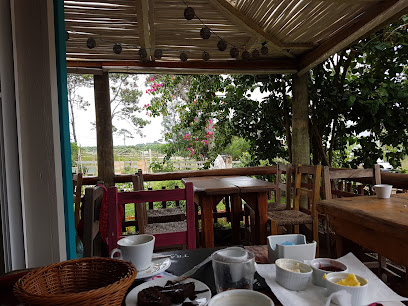
Markets, malls and hidden boutiques
Montevideo Shopping Center
Discover the vibrant Montevideo Shopping Center, a premier retail destination in Uruguay offering diverse shopping, dining, and entertainment experiences.

Punta Carretas Shopping
Explore Punta Carretas Shopping in Montevideo, where diverse retail, dining, and entertainment options converge for an unforgettable shopping experience.
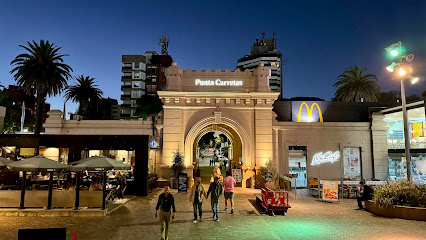
Punta Shopping
Punta Shopping Mall: A Premier Shopping Destination in Punta del Este Offering Luxury Brands, Local Artisans, and Delicious Dining Experiences.

Feria de Tristan Narvaja
Explore the lively Feria de Tristan Narvaja, Montevideo's premier flea market, filled with antiques, crafts, and local cuisine every Sunday.
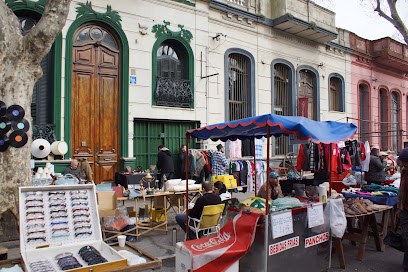
Siñeriz Shopping y free shop
Explore unbeatable deals at Siñeriz Shopping y Free Shop, your ultimate destination for duty-free shopping, dining, and entertainment in Rivera, Uruguay.
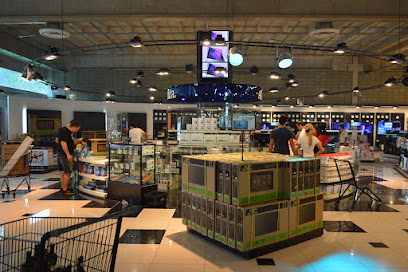
Santa Teresa National Park
Experience the breathtaking landscapes and rich biodiversity of Santa Teresa National Park, a national treasure in Uruguay's Rocha Department.
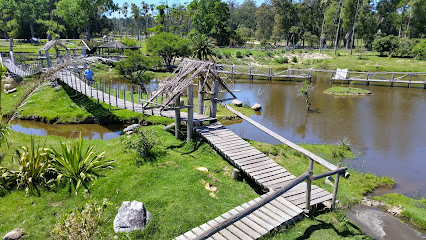
Fortress of Santa Teresa
Discover Uruguay’s military history at the Fortress of Santa Teresa, a stunning landmark blending historical significance with breathtaking coastal views.

El Faro del Cabo Santa Maria
Experience the stunning beauty and rich history of El Faro del Cabo Santa Maria, a must-visit lighthouse in La Paloma, Uruguay.
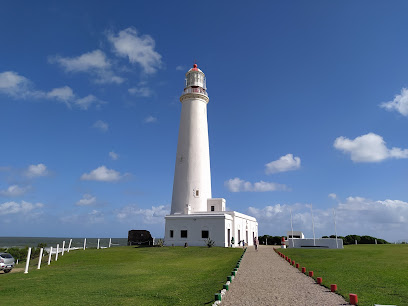
OH! LA BARRA
Experience the vibrant shopping and dining scene at OH! LA BARRA, the heart of La Barra's culture and leisure in Uruguay.
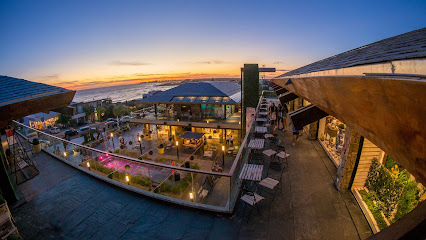
Hotel Parque Oceánico
Experience the serene beauty of Rocha Department at Hotel Parque Oceánico, your perfect getaway in Uruguay surrounded by nature and tranquility.

Playa Anaconda
Experience the tranquil allure of Playa Anaconda, a pristine beach in La Paloma, Uruguay, perfect for relaxation and stunning coastal views.
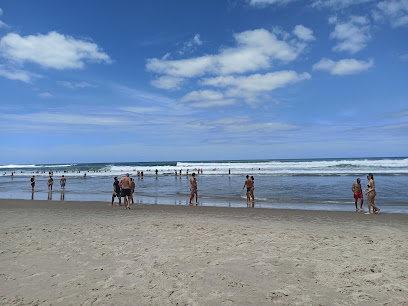
Museo Gurvich
Explore the vibrant world of Joaquín Gurvich at Museo Gurvich in Montevideo, where art and culture come alive in every corner.
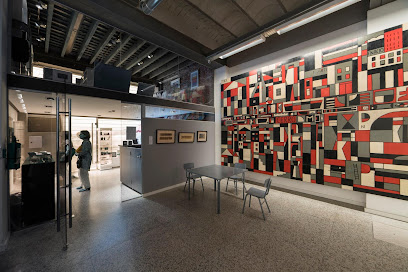
Del Rivero Beach
Discover Del Rivero Beach, a stunning destination in Punta del Diablo, offering golden sands, crystal-clear waters, and unforgettable sunsets.
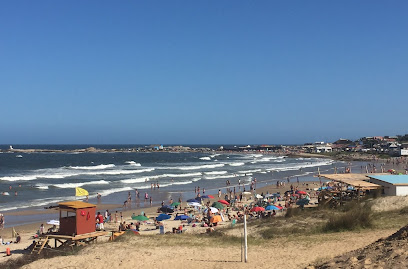
Paseo Del Rivero
Explore the charming Paseo Del Rivero in Punta del Diablo, where shopping meets local culture in a vibrant coastal setting.
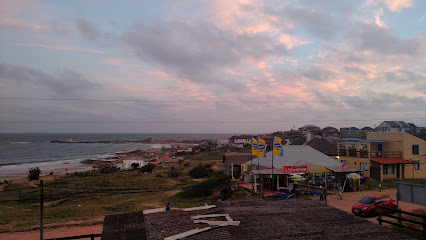
Monte de Ombúes
Discover the serene beauty of Monte de Ombúes, a captivating natural attraction in Rocha Department, perfect for nature lovers and outdoor enthusiasts.
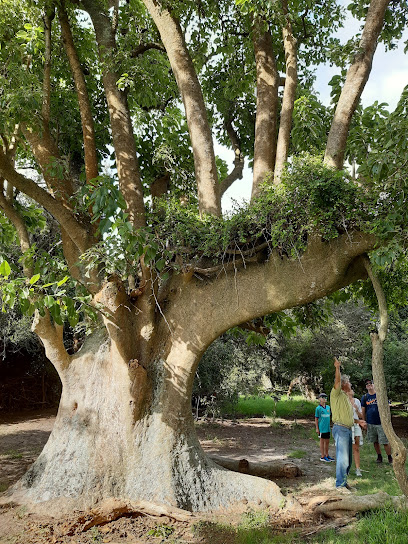
Essential bars & hidden hideouts
Baar Fun Fun
Experience the vibrant nightlife of Montevideo at Baar Fun Fun, a lively bar known for its delicious cocktails and welcoming atmosphere.

Bar Tabaré
Discover the vibrant nightlife of Montevideo at Bar Tabaré, where delicious drinks and a lively atmosphere await every visitor.
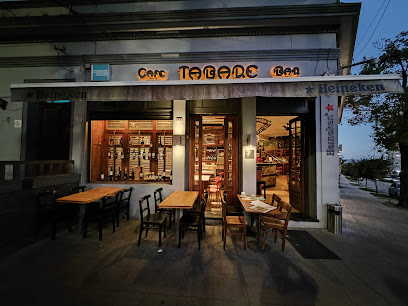
Americano
Discover the vibrant culinary scene at Americano, Rocha's premier restaurant for unforgettable dining experiences.
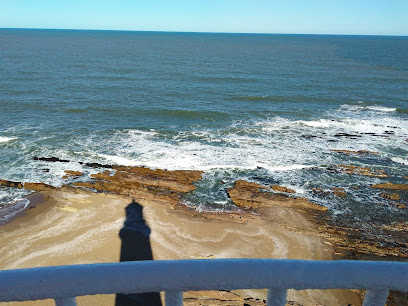
Baker's Bar
Experience the vibrant culinary scene of Montevideo at Baker's Bar, where delicious tapas and local brews come together in a lively atmosphere.
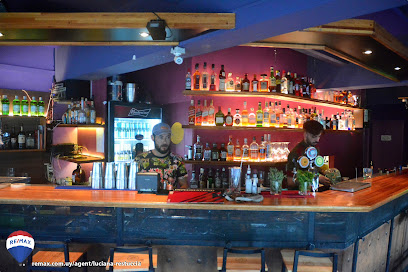
Parador Rocha
Experience the authentic taste of Uruguay at Parador Rocha, where local flavors meet warm hospitality in a vibrant setting.
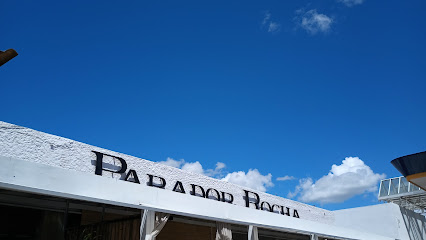
Apalco
Discover the rich flavors of Uruguay at Apalco, a charming restaurant in Rincon de la Laguna, offering authentic dishes and a warm atmosphere.
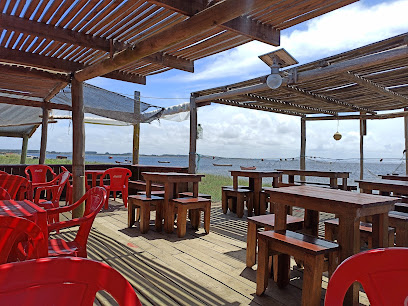
Parador María Esther
Experience the flavors of Uruguay at Parador María Esther, a fast food gem in Rocha offering a delightful menu in a relaxed atmosphere.
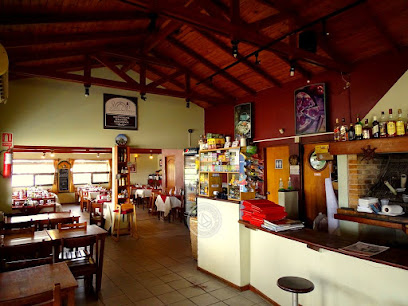
Mojito Resto
Discover the vibrant flavors and breathtaking views at Mojito Resto, a culinary gem on Rambla Costanera in La Aguada y Costa Azul.

Hola Amor Bar Boutique
Discover the vibrant flavors and stunning coastal views at Hola Amor Bar Boutique in Punta del Diablo, where culinary excellence meets seaside charm.
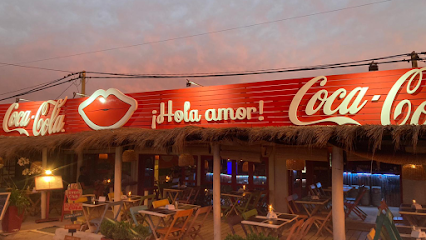
City Café
Experience the vibrant flavors and cozy atmosphere of City Café in Rocha, a perfect stop for coffee lovers and food enthusiasts.
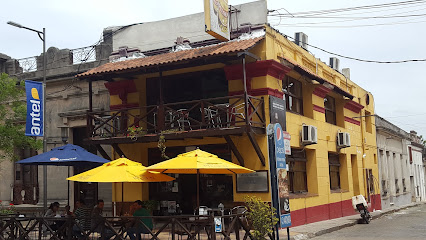
Boteco del diablo
Experience the vibrant flavors of Punta del Diablo at Boteco del Diablo, a must-visit fast food gem for every traveler.
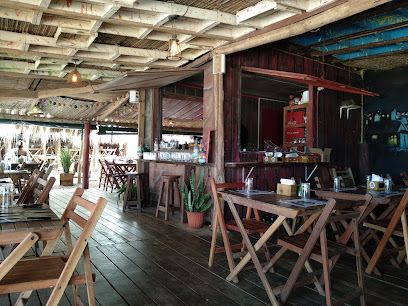
Restaurante Y Pizzeria Los Pelado's
Experience the best of fast food and local flavors at Restaurante Y Pizzeria Los Pelado's in Rocha, Uruguay.
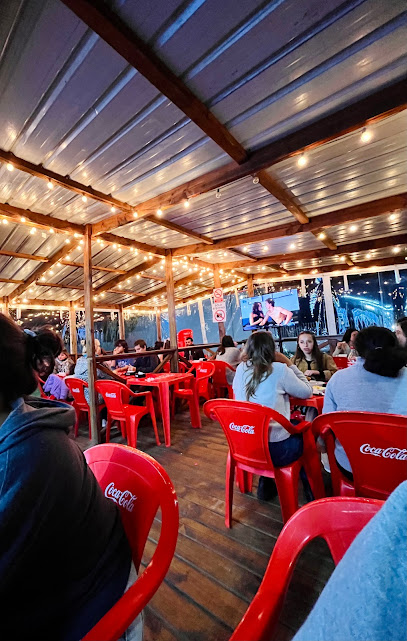
Arrai Beach Bar
Experience the vibrant flavors and stunning views at Arrai Beach Bar, a coastal gem in Punta del Diablo's culinary scene.
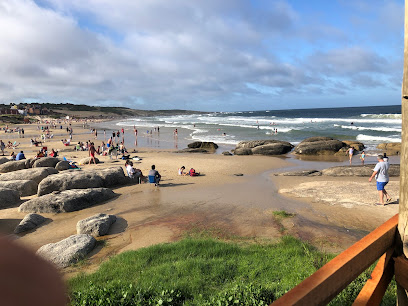
La Onda
Discover La Onda, La Paloma's favorite fast food spot, offering delicious bites and a vibrant atmosphere for an unforgettable dining experience.
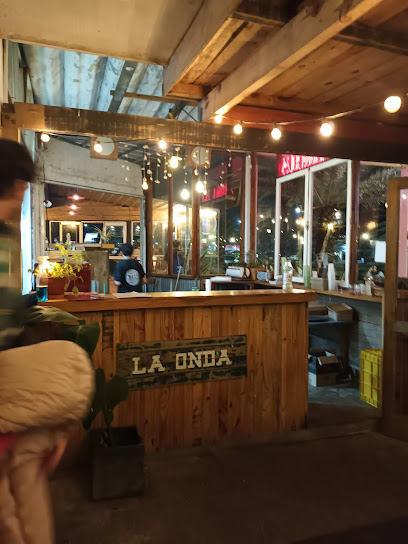
Modo Boliche
Modo Boliche: Where vibrant nightlife meets delicious food and drinks in Rocha, Uruguay. Experience the local culture and flavors like never before.
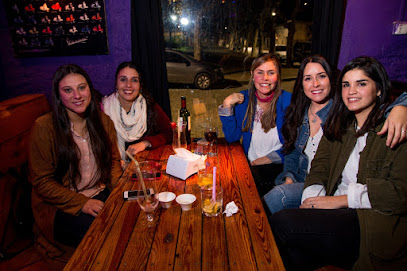
Local Phrases about Rocha Coast
-
- HelloHola
[oh-lah] - GoodbyeChau
[chow] - YesSí
[see] - NoNo
[noh] - Please/You're welcomePor favor/De nada
[por fah-vor/de nah-dah] - Thank youGracias
[grah-see-as] - Excuse me/SorryDisculpe/Perdón
[dees-kool-peh/pehr-dohn] - How are you?¿Cómo estás?
[koh-moh ehs-tahs] - Fine. And you?Bien. ¿Y tú?
[byen. ee too] - Do you speak English?¿Hablas inglés?
[ah-blahs een-glehs] - I don't understandNo entiendo
[noh ehn-tee-ehn-doh]
- HelloHola
-
- I'd like to see the menu, pleaseMe gustaría ver el menú, por favor
[meh goos-tah-ree-ah vehr ehl meh-noo, por fah-vor] - I don't eat meatNo como carne
[noh koh-moh kahr-neh] - Cheers!Salud!
[sah-lood] - I would like to pay, pleaseMe gustaría pagar, por favor
[meh goos-tah-ree-ah pah-gar, por fah-vor]
- I'd like to see the menu, pleaseMe gustaría ver el menú, por favor
-
- Help!¡Ayuda!
[ah-yoo-dah] - Go away!¡Vete!
[veh-teh] - Call the Police!¡Llama a la Policía!
[yah-mah ah lah poh-lee-see-ah] - Call a doctor!¡Llama a un médico!
[yah-mah ah oon meh-dee-koh] - I'm lostEstoy perdido/a
[ehs-toy pehr-dee-doh/dah] - I'm illEstoy enfermo/a
[ehs-toy ehn-fehr-moh/dah]
- Help!¡Ayuda!
-
- I'd like to buy...Me gustaría comprar...
[meh goos-tah-ree-ah kohm-prahr...] - I'm just lookingSolo estoy mirando
[soh-loh ehs-toy mee-rahn-doh] - How much is it?¿Cuánto cuesta?
[kwan-to kwehs-tah] - That's too expensiveEso es demasiado caro
[eh-soh ehs deh-mah-syah-doh kah-roh] - Can you lower the price?¿Puedes bajar el precio?
[pweh-dehs bah-har ehl pree-syoh]
- I'd like to buy...Me gustaría comprar...
-
- What time is it?¿Qué hora es?
[keh oh-rah ehs] - It's one o'clockEs la una
[ehs lah oo-nah] - Half past (10)Y media (10)
[ee meh-dee-ah (deez)] - MorningMañana
[mah-nyah-nah] - AfternoonTarde
[tahr-deh] - EveningNoche
[noh-cheh] - YesterdayAyer
[ah-yehr] - TodayHoy
[oy] - TomorrowMañana
[mah-nyah-nah] - 1Uno
[oo-noh] - 2Dos
[dohs] - 3Tres
[trehs] - 4Cuatro
[kwah-troh] - 5Cinco
[seen-koh] - 6Seis
[says] - 7Siete
[syeh-teh] - 8Ocho
[oh-choh] - 9Nueve
[nweh-veh] - 10Diez
[dyehs]
- What time is it?¿Qué hora es?
-
- Where's a/the...?¿Dónde está el/la...?
[dohn-deh ehs-tah ehl/lah] - What's the address?¿Cuál es la dirección?
[kwal ehs lah dee-rek-syohn] - Can you show me (on the map)?¿Puedes mostrarme (en el mapa)?
[pweh-dehs mohs-trar-meh (ehn ehl mah-pah)] - When's the next (bus)?¿Cuándo es el próximo (autobús)?
[kwan-doh ehs ehl proh-ksee-moh (ow-toh-boos)] - A ticket (to ....)Un boleto (a ...)
[oon boh-leh-toh (ah)]
- Where's a/the...?¿Dónde está el/la...?
History of Rocha Coast
-
Long before European explorers set foot on Rocha Coast, the region was inhabited by indigenous tribes, most notably the Charrúa people. These native groups thrived in the area, relying on fishing, hunting, and gathering for sustenance. Their deep connection to the land and sea is reflected in the archaeological finds scattered along the coast, including ancient tools, pottery, and cave paintings.
-
In the early 16th century, Spanish explorers arrived on the Rocha Coast, marking the beginning of European influence in the region. The Spanish established settlements and missions, aiming to convert the indigenous population to Christianity. Rocha Bay, with its strategic location, became a focal point for these early colonization efforts.
-
During the 17th and 18th centuries, the Rocha Coast was a hotspot for pirates and privateers. The remote beaches and hidden coves provided perfect hideouts for these seafaring outlaws. Stories of buried treasure and shipwrecks still capture the imagination of visitors today, with some even embarking on treasure hunts along the coast.
-
In response to the threat of Portuguese expansion and pirate activities, the Spanish Crown ordered the construction of Fort Santa Teresa in 1762. This imposing fortress, strategically located near the Brazilian border, played a crucial role in the defense of the region. Today, the fort is a popular tourist attraction, offering a glimpse into the military history of Rocha Coast.
-
The early 19th century saw Rocha Coast caught in the tumultuous period of South American independence wars. The region witnessed numerous battles between Spanish loyalists and revolutionary forces. With Uruguay's eventual independence in 1825, Rocha Coast began to develop its own identity, blending indigenous, Spanish, and African influences into a unique cultural tapestry.
-
In the late 19th century, the coastal town of La Paloma was established as a fishing village and later developed into a popular seaside resort. Its picturesque lighthouse, built in 1874, remains an iconic landmark. La Paloma's growth marked the beginning of Rocha Coast's transformation into a favored destination for tourists seeking natural beauty and tranquility.
-
In recent decades, Rocha Coast has become a leader in environmental conservation. The establishment of protected areas, such as Cabo Polonio National Park and Laguna de Rocha, highlights the region's commitment to preserving its unique ecosystems. These efforts ensure that future generations can continue to enjoy the pristine beaches, diverse wildlife, and stunning landscapes that define Rocha Coast.
Rocha Coast Essentials
-
Rocha Coast is located in the southeastern part of Uruguay. The nearest international airport is Carrasco International Airport in Montevideo, approximately 220 kilometers away. From Montevideo, you can take a bus operated by companies like COT or COPSA, which frequently travel to Rocha. The journey by bus takes around 3 to 4 hours. Renting a car is also an option for those who prefer to drive themselves, allowing you to explore the scenic route along Route 9.
-
Rocha Coast features multiple transportation options for getting around. Public buses connect the main towns, including La Paloma, La Pedrera, and Punta del Diablo. Taxis and ride-sharing services like Uber are available but can be more expensive. Renting a bike is a popular way to explore the coastal areas and nature reserves. For those wanting more freedom, car rental services are available in Montevideo and Rocha.
-
The official currency in Uruguay is the Uruguayan Peso (UYU). Credit cards are widely accepted in hotels, restaurants, and larger shops. However, it's advisable to carry some cash for smaller establishments and markets. ATMs are available in major towns along Rocha Coast, but it's a good idea to withdraw enough cash beforehand, especially if you plan to visit more remote areas.
-
Rocha Coast is generally safe for tourists, but it's important to stay vigilant. Avoid isolated beaches at night and keep an eye on your belongings in crowded areas. While there are no specific high-crime areas targeting tourists, petty theft can occur. Stick to well-lit and populated areas, especially after dark.
-
In case of emergency, dial 911 for immediate assistance. The main towns along Rocha Coast have local police stations and medical facilities. It's recommended to have travel insurance that covers medical emergencies. Pharmacies are available in towns like La Paloma and Punta del Diablo for over-the-counter medications and minor health issues.
-
Fashion: Do dress casually and comfortably. Beachwear is appropriate for the coast, but cover up when away from the beach. Avoid overly revealing clothing in public spaces. Religion: Do respect local customs and traditions, especially if visiting religious sites. Public Transport: Do be respectful and queue patiently. Don’t eat or drink on buses. Greetings: Do greet people with a friendly 'Hola' or 'Buen día'. A handshake is also common. Eating & Drinking: Do try local seafood dishes and accept food offerings graciously. Don’t refuse hospitality, as it is considered impolite.
-
To experience Rocha Coast like a local, visit the local markets in towns like La Paloma for fresh produce and artisanal goods. Engage with locals who are often friendly and willing to share insights about the area. Don't miss the chance to explore Cabo Polonio, a remote village accessible only by 4x4 vehicles, offering a unique blend of nature and rustic charm. Additionally, take time to visit the local 'paradores' (beachside bars) for a taste of the local nightlife.
Trending Landmarks in Rocha Coast
-
The Fingers of Punta del Este
-
Santa Teresa National Park
-
Colonia del Sacramento Lighthouse
-
Fortress of Santa Teresa
-
Francisco Piria Castle
-
El Faro del Cabo Santa Maria
-
Puerto de Punta del Este
-
Palacio Salvo
-
Punta Ballena Lookout Point
-
Museo Ralli Punta del Este
-
Fuerte San Miguel
-
Plaza Independencia
-
Mirador La Mano
-
Farol de Cabo Polonio
-
Artigas Mausoleum
Nearby Cities to Rocha Coast
-
Things To Do in Punta del Este
-
Things To Do in Montevideo
-
Things To Do in Tacuarembó
-
Things To Do in Colonia del Sacramento
-
Things To Do in La Plata
-
Things To Do in Buenos Aires
-
Things To Do in Fray Bentos
-
Things To Do in Mar del Plata
-
Things To Do in Rosario
-
Things To Do in Encarnacion
-
Things To Do in Carmen del Parana
-
Things To Do in Florianópolis
-
Things To Do in Puerto Iguazú
-
Things To Do in Foz do Iguaçu
-
Things To Do in Villarrica











